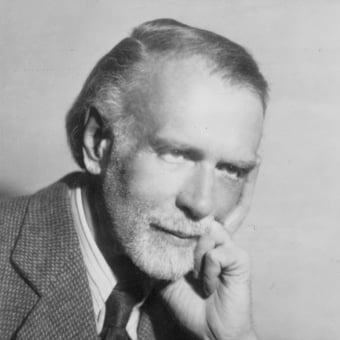
Zoltán Kodály
d. 6 March 1967, Budapest
Along with Béla Bartók, Zoltán Kodály is one of the two major figures in Hungarian music in the twentieth century. Composer, pioneering ethnomusicologist, groundbreaking educationalist and critic, Kodály enjoyed a status in his native land that is perhaps unrivalled by any other figure anywhere else in the world.
Kodály was born in Kecskemét, in Hungary, on 16 December 1882. Though from a musical family, his initial inclination was towards literary studies. As his father was a railway official, the Kodály family had a rather peripatetic existence: from 1884 until 1891 they lived in Galánta (later to be immortalised in the orchestral dances Kodály based on folk music from the area), then moving to Nagyszombat, where Zoltán studied violin and piano and sang in the cathedral choir – an early introduction to the importance of choral singing. He explored the scores in the cathedral music library, and taught himself the cello to make up the numbers for his father’s domestic quartet-evenings. And he was already composing: in 1897 the school orchestra played an overture of his, to be followed by a Mass for chorus and orchestra a year later.
His higher education began at the University of Sciences in Budapest in 1900, but the call of music proved too strong and in 1902 he enrolled at the Academy of Music, taking a Ph.D. in 1906 with a thesis entitled "Strophic Construction in Hungarian Folk Song". He was now composing prolifically – and he had already begun his fieldtrips, collecting folksongs in the Hungarian countryside with his close friend Béla Bartók; though they published their first joint collection early on, it was not until 1951 that their comprehensive critical edition of Hungarian folksongs appeared.
As with Bartók, Kodály’s own music was coloured by the joint influence of Hungarian folksong and of Debussy and French impressionism (he spent some months in Paris, where he attended Widor’s lectures). On his return to Budapest in 1907 he was appointed teacher of theory at the Academy of Music, and a year later he began to teach composition. He was to teach there for the rest of his life: upon his retirement as a professor, he was brought back as the Director of the Academy in 1945.
His compositions began to make headway outside Hungary around 1910, stimulated by concerts in which Bartók and Kodály presented their own music. The real breakthrough came in 1923, with a commission to celebrate the fiftieth anniversary of the union of the two cities of Buda and Pest. The result was the Psalmus Hungaricus, a powerful setting of a sixteenth-century Hungarian version of Psalm LV which established Kodály as both a national cultural leader and a figure of international standing. The first of the two operas which followed, Háry Janos (1926) and The Spinning Room (1932), yielded a suite that soon became internationally popular, as did the orchestral Dances from Marossek (1930) and Dances from Galánta (1933), all presenting an authentic Hungarian national idiom in a manner that allowed it international prominence. His other orchestral works include a Concerto for Orchestra (1939–40) a Symphony (1957–61) and, one of his best-known scores, the Variations on a Hungarian Folk Song (1938–39), often referred to as the ‘Peacock Variations’. Among his choral-orchestral output the Missa Brevis (1942–44) enjoys considerable esteem, as does the Budavár Te Deum (1936).
Kodály’s authority as a musical pedagogue is almost as high as his reputation as a composer. The ‘Kodály method’ he developed exploits the natural musicality of children to open the pleasures of performance to them, and has become a commonplace of music teaching all around the world. He composed an enormous quantity of choral exercises explicitly intended to encourage amateur singers to extend their techniques, so that his music is likely to remain an active part of the world’s musical life as long as people still want to sing.
Zoltan Kodaly is published by Boosey & Hawkes
This biography can be reproduced free of charge in concert programmes with the following credit: Reprinted by kind permission of Boosey & Hawkes
